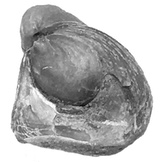Carbonate Sequence Stratigraphy
Although most of this website focuses on shallow-marine siliciclastic systems, sequence analysis can be just as readily applied to carbonate systems. Carbonates have several aspects that make their response to relative sea-level changes and the character of their sequence stratigraphic elements somewhat different from siliciclastics.
First, when subaerially exposed, carbonates are more prone to dissolution than mechanical erosion. Consequently, sequence boundaries in carbonates are more commonly expressed as karst surfaces with solution relief, collapsed breccias, paleosols, and silicification. Other exposure features are visible petrographically, like pendant and meniscus cements, vadose silt, grain dissolution, and neomorphism. Still others are detectable isotopically, such as negative shifts in δ13C.
Second, carbonate sediment production is largely in situ rather than transported from outside the sedimentary basin. Whereas relative sea-level rise can trap siliciclastic sediments in estuaries and coastal lagoons, moderate rates of relative sea-level rise promote higher rates of carbonate production. Consequently, transgressive systems tracts in carbonate settings can be quite thick, much thicker than in siliciclastic systems. This leaves little unfilled accommodation in the highstand, causing carbonate highstand systems tracts to be much thinner than in siliciclastic systems. Extremely rapid rates of relative sea-level rise can cause a total shutdown in carbonate production, leading to the formation of spectacular condensed sections with extensive hardground formation as well as pyrite and phosphate mineralization.
Third, because carbonate production can often keep pace with moderate rates of relative sea-level rise, some carbonate deposits are characterized by thick intervals of peritidal cycles, that is, carbonate parasequences that shallow upwards to supratidal depths. Identifying depth trends over dozens to hundreds of peritidal cycles can be difficult or impossible. Given that, stacking patterns in peritidal carbonates are often recognized not by depth trend but by parasequence thickening and thinning trends. Upward thickening of successive parasequences without a net water depth change indicates progressively greater rates of relative sea-level rise, with sediment production matching the rate of rise. Such upward thickening of cycles is treated as retrogradational stacking. Upward thinning of peritidal cycles would indicate slowing rates of relative sea-level rise and is treated as progradational stacking.
Except for these differences, application of sequence stratigraphic principles in terms of interpreting beds and bedsets, recognizing parasequences, stacking patterns and parasequence sets, and identifying significant stratal surfaces and systems tracts is nearly identical in approach for carbonates and siliciclastics.

